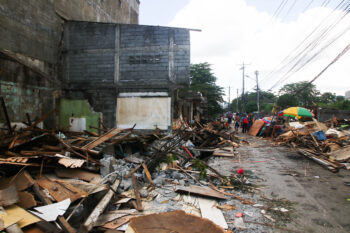
MALAYBALAY CITY (MindaNews / 23 June) — Most cultures consider graveyards and cemeteries sacred places. It doesn’t matter how the dead are buried – in a mausoleum, in an ornate pantheon, six feet below the cold earth, or in the case of the Lumad (indigenous peoples), in places marked not by crosses or other religious symbols but by the memory of the living.
There are cemeteries that are exclusive to a particular religious sect as well as public ones that accommodate the dead regardless of belief or class. There are private cemeteries, fashionably called memorial parks, for families that wish to avoid the congestion that characterizes most public cemeteries.
There are cemeteries that mirror a nation’s history, among them Arlington National Cemetery in the United States and our own Libingan ng mga Bayani. However, the Libingan may have been desecrated with the surreptitious burial of the dictator Ferdinand E. Marcos there.
Sadly, there are those who died in places where their loved ones could not possibly go to light candles and say a prayer either because their graves are unmarked, if they were buried at all, or those places are beyond the reach of ordinary mortals.
Such was the fate of around 1,500 passengers of the Titanic, which sank after sideswiping an iceberg on 15 April 1912, four days into their maiden voyage from Southampton, England to New York City.
More than a century after it sank, five individuals dived into the floor of the Atlantic Ocean to see the wreckage of the ill-fated biggest ship of its time, only to be added to the list of those who have made the ocean floor their final resting place.
The five boarded the Titan, a 22-foot long submersible that lost contact with its support ship nearly two hours after its dive, according to usatoday.com. On Thursday they were confirmed to have died when the vessel had what a US Coast Guard official called a “catastrophic implosion.” They were identified as a British adventurer, two members of a prominent Pakistani business family, a Titanic expert and the CEO of OceanGate, the Washington state-based company that operates the vehicle.
A trip aboard Titan would cost $250,000, at least 12.5 million in local currency, quite a fortune but a pittance for wealthy thrill-seekers. The amount means nothing compared to the chance to see the remains of perhaps the most storied ship in history. It’s just that the five adventurers didn’t get the chance to experience the feeling of seeing up close a massive artifact of death ironically because they too died in or near it.
Worse, people have mixed feelings about the fate of Titan and its passengers. Sympathy has been slow in coming. Many argued that the money spent on such a vanity was better channeled to humanitarian efforts.
Indeed, why make the relic of a century-old tragedy a destination for deep-sea tourism? How callous can the company be that it would have no qualms at transforming such an object into a spectacle for those who can afford the price tag?
If the dead could speak, they would have asked these questions. But, in a way, they may already have imparted the message that they didn’t want to be disturbed. Go find another place, not this hallowed part of the Atlantic.
(MindaViews is the opinion section of MindaNews. H. Marcos C. Mordeno can be reached at hmcmordeno@gmail.com.)







